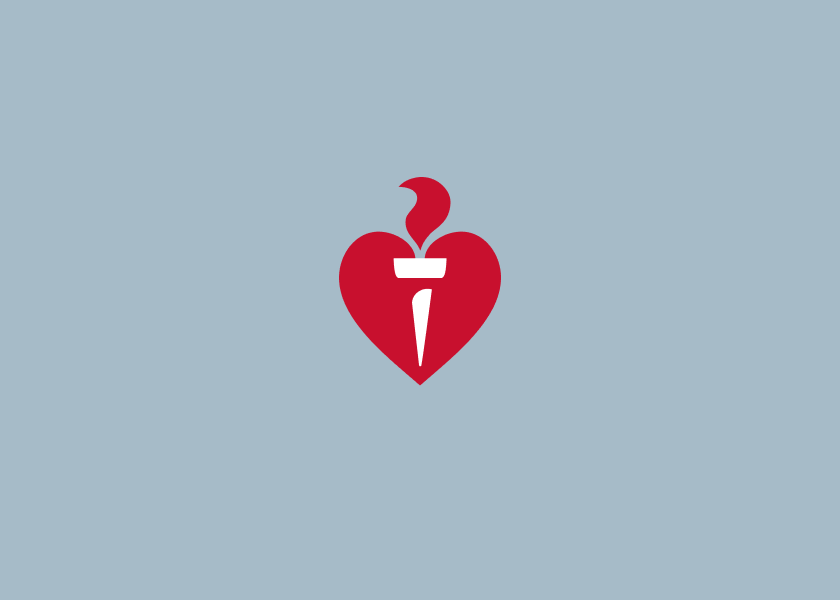.jpg?format=pjpg&auto=webp)
What is heart failure?
Heart failure is a condition where your heart isn’t pumping as well as it should be.
Key takeaways
2 min read
Heart failure is a condition that occurs when your heart muscle doesn’t pump blood to the rest of your body the way it should
Heart failure is a long-term condition. Often it’s uncurable and may need lifelong management, including medicines
Treatment can help your heart pump stronger, help you feel better and help you live a longer, healthier life.
The 'Living well with heart failure' video series is now available in different languages:
- Watch in Arabic
- Watch in Cantonese
- Watch in Greek
- Watch in Hindi
- Watch in Italian
- Watch in Mandarin
- Watch in Punjabi
- Watch in Sinhalese
- Watch in Spanish
- Watch in Turkish
- Watch in Urdu
- Watch in Vietnamese
Heart failure is a condition where your heart isn’t pumping blood to the rest of your body as well as it should. If your heart is damaged or not pumping properly, it can become enlarged, weak or stiff.
If you suffer from heart failure, your muscles and organs receive less oxygen and nutrients. This can make you feel dizzy and tired. Extra fluid can build up in your body, which can make you feel short of breath and cause swelling in your legs or abdomen.
What are the different types of heart failure?
Heart failure can occur in the left, right or both sides of the heart. Heart failure can also be grouped by an important measure known as the ejection fraction – which measures how well your heart is pumping blood, and it is used to guide treatment of heart failure.
The ejection fraction measures the amount of blood your heart pushes in and out with each heartbeat. In a healthy heart, the ejection fraction is 50% or higher – meaning that the heart is pumping out at least half the volume of blood that fills the chambers with each beat. In heart failure, you can either have a reduced rejection fraction, or a preserved ejection fraction.
Heart failure with reduced ejection fraction (HFrEF, or systolic heart failure)
In heart failure with reduced ejection fraction, your heart muscle is weakened and does not pump enough blood to meet the needs of your body. When your heart muscle struggles to properly pump blood to your body, fluid begins to build up in your body’s blood vessels.
As more fluid builds up, it can leak into the space around your lungs and other areas of your body, causing shortness of breath and swelling. When your heart doesn’t pump well, your muscles and organs receive less oxygen and nutrients, which can make you feel dizzy and tired.
Heart failure with preserved ejection fraction (HFpEF, or diastolic heart failure)
In heart failure with preserved ejection fraction, your heart muscle can pump blood to the rest of your body, but the heart muscle does not stretch well. When your heart muscle does not stretch, the pressure inside your heart can build up. This can cause fluid to leak into the space around your lungs and other areas of your body, causing shortness of breath and swelling.
There are other types of heart failure that cause similar symptoms, such hypertrophic obstructive cardiomyopathy and right ventricular failure. Talk to your doctor about your heart failure and what it means for your treatment and management.
What are the causes of heart failure?
The most common causes of heart failure are heart attack and coronary heart disease, but there are numerous other causes. Many people who have heart failure live with other long-term conditions, such as lung disease or diabetes.
Heart failure can develop as the result of other conditions which have damaged, weakened or stiffened your heart, such as:
- Old age
- Chronic conditions – such as diabetes, HIV and thyroid conditions
- Coronary heart disease and heart attack
- Damage to the heart muscle (cardiomyopathy) – causes can include infection, alcohol abuse and certain medications
- Faulty heart valves (heart valve disease)
- Heart rhythm problems (arrhythmias)
- Heart conditions you're born with (e.g. congenital heart disease)
- High blood pressure (hypertension)
- Inflammation of the heart muscle (myocarditis)
- Pregnancy – which forces your heart to work harder than it should
Work with your professional healthcare provider to understand why you have developed heart failure and how you can manage your symptoms and live a quality life.
What are the signs and symptoms of heart failure?
Heart failure causes symptoms because of the reduced supply of oxygen and nutrients to your muscles and organs, and the build-up of fluid in your body (i.e. congestion). You may feel one or many of these common heart failure symptoms:
- Bloated stomach
- Chest pain
- Coughing
- Difficulty with breathing or shortness of breath, especially when doing physical activity
- Discomfort when lying flat, due to difficulty with breathing
- Dizziness
- Heart pounding or racing (i.e. palpitations)
- Loss of appetite or nausea
- Swollen ankles or legs (i.e. oedema)
- Tiredness
- Waking overnight due to difficulty with breathing
- Weakness
What should you do if your symptoms get worse?
If your symptoms of heart failure get worse, you need to see your health care team quickly. If you see your doctor early, you may stop your heart failure symptoms from becoming worse and this could help you avoid the need for a long hospital stay.
How can you prevent heart failure?
The best way to prevent heart failure is to prevent coronary heart disease and heart attack. If you have had a heart attack it’s important to manage your risk factors and follow your treatment plan, including regular check-ups with your health care team.
However, sometimes heart failure is not preventable, and you may develop symptoms because of another condition, genes or an unknown cause. Work with your health team to understand why you have developed heart failure and how you can manage your symptoms and live a quality life.
How is heart failure diagnosed?
To diagnose heart failure, your doctor will review your symptoms, ask about a family history of heart disease and conduct a physical examination. Your doctor may recommend you have some tests including:
- Blood tests
- Echocardiogram (ECHO)
- Electrocardiogram (ECG)
- Chest X-ray
How is heart failure managed?
Heart failure is a long-term condition that often needs lifelong management. There are things you can do to help you feel better, stay out of hospital and live a longer and healthier life.
Management for heart failure can include a combination of heart failure programs, regular physical activity, cardiac rehabilitation, medicines, and in some cases, devices and surgery.
Heart failure management programs (chronic disease management programs)
Attending a specialised program for people with heart failure can reduce the risk of complications and having to go to hospital. Going to a program can also help you live longer and improve your quality of life.
Heart failure programs, sometimes called chronic disease management programs, are run by health care professionals who work as a team to help you manage your condition. The team can include a heart failure nurse, a cardiologist, pharmacist, physiotherapist, dietitian or a psychologist.
When you attend a heart failure management program, you’ll get information to help you manage your condition. This can include:
how to manage your heart failure medicines
when to act if your symptoms get worse
how to monitor your fluid levels.
You can attend a heart failure management program either in-person or via telehealth (over the phone), or a combination of both. Heart failure management programs can include physical activity and exercise, or you may be referred to a cardiac rehabilitation program.
If you have heart failure and haven’t been referred to a heart failure management program, ask your doctor to help you enrol.
Physical activity and cardiac rehabilitation
You might already know that physical activity is important for good heart health. Did you know that people with heart failure can also benefit from regular physical activity, and is recommended by cardiologists and experts?
People who have heart failure can sometimes find it difficult to carry out day-to-day activities because they can feel short of breath or tired in the legs. But physical activity and exercise can improve these feelings.
Attending a cardiac rehabilitation program is one of the best things you can do for heart failure. Everyone can benefit from cardiac rehabilitation - it can improve your quality of life, keep you out of hospital and have a positive impact on your wellbeing.
Cardiac rehabilitation combines exercise and education sessions to help you make healthy changes. This includes exercise to help increase your strength, fitness and confidence levels. Exercise includes activities that make you slightly out of breath, while still being able to hold a conversation. For example, walking or riding a stationary bike. It might also include exercises that use light weights or other equipment. You’ll get a tailored exercise program to suit you and you will be able to go at your own pace.
Find a cardiac rehabilitation program near you. You can also join a Heart Foundation walking group or sign up for a Personal Walking Plan.
Medicines
Medicines for heart failure make it easier for your heart to pump blood around your body, help you feel better, keep you out of hospital and lead a longer, healthier life.
Heart failure medicines usually need to be taken long-term. Your doctor may increase the dose of your medicines even if you feel well. It’s important you do not stop taking your heart failure medicines without speaking to your doctor or pharmacist first.
Below are some common types of heart failure medicines. Your doctor will prescribe certain medicines depending on the type of heart failure you have. Many people with heart failure need to take a combination of medicines.
For more information about heart failure medicines, visit the NPS MedicineWise website.
More information about general heart medicines is also available, here.
Angiotensin-converting enzyme inhibitors (ACE inhibitors)
ACE inhibitors dilate the blood vessels to improve the flow of oxygen and blood around the body. These medicines help the heart to pump blood more easily and efficiently.
Angiotensin receptor blockers (ARBs)
ARBs work in the same way as ACE inhibitors.
Your doctor might prescribe an ARB instead of an ACE inhibitor if you get side effects from taking ACE inhibitors (for example, a persistent cough).
Angiotensin receptor-neprilysin inhibitors (ARNIs)
Your doctor might prescribe an ARNI instead of an ACE inhibitor or ARB if they think these medicines would work best for you. ARNIs work by helping to manage your blood pressure and can also get rid of extra fluid.
Beta blockers
Beta blockers help your heart pump more efficiently by pumping slower and stronger.
Mineralocorticoid receptor antagonists (MRAs or aldosterone blockers)
MRAs block the effects of the hormone aldosterone, which helps manage blood pressure. These medicines can also help prevent or reduce damage and changes to the heart muscle.
Sodium-glucose cotransporter 2 (SGLT2) inhibitors
These medicines can improve symptoms of heart failure by reducing extra fluid in the body. SGLT2 inhibitors also help manage blood sugar levels in people with heart failure and diabetes.
Diuretics
Diuretics help get rid of extra fluid from your body, including your lungs, abdomen (tummy), legs, ankles and feet. They do this by increasing the amount of urine (pee) you make.
Diuretics help you feel better by reducing swelling and making it easier to breathe. They are usually used every now and then.
You doctor might also prescribe other medicines for heart failure.
Pacemakers and other devices
The heart has its own electrical system that regulates the heartbeat. With every heartbeat, there's an electrical signal that travels through your heart, causing it to contract and pump blood around the body.
For some people with heart failure, the electrical system doesn’t work properly. People with heart failure have an increased risk of abnormal heart rhythms (arrythmias), like atrial fibrillation. If you have an abnormal heart rhythm, you may need a pacemaker or device to regulate the heart rate and rhythm.
There are different types of pacemakers and devices. Your doctor will talk to you about which type of pacemaker is most suitable for you. Having a pacemaker or device can greatly improve your quality of life and for some people it can be lifesaving.
Pacemakers and other devices
A pacemaker is a small implantable device that electrically stimulates the heart to maintain a regular heart rhythm. It is inserted under the skin on your chest (or tummy) and has one or more wires that connect to your heart. The pacemaker produces small electrical currents that stimulate the heart to pump regularly.
Pacemakers are sometimes used in people with heart failure to help reduce symptoms when the left and the right side of the heart don’t beat together. This is a special type of pacemaker, also sometimes called a ‘cardiac resynchronisation therapy (CRT) device’ or a ‘biventricular pacemaker’. This type of pacemaker is often combined with an implantable cardioverter defibrillator (CRT-D).
A pacemaker shouldn’t affect your day-to-day life. You may need to make a few small changes for a short time. People who have pacemakers and devices need to have regular follow-up appointments to make sure the device is working well. A pacemaker battery usually lasts between five to 15 years. Your doctor will check the battery. When the battery is running low, you will need to go back into hospital to have a new pacemaker inserted.
Implantable cardioverter defibrillator (ICD)
An ICD is a small battery-powered box (smaller than a matchbox) that is inserted under the skin, usually in the space just below the collar bone (clavicle). Thin wires connect the ICD to the heart. The ICD continuously monitors your heart and can correct dangerous abnormal heart rhythms by delivering controlled electric ‘shocks’. There are different types of ICDs and your doctor will talk to you about which option is right for you.
Surgery and procedures
Some people with heart failure may need other surgeries and procedures to improve symptoms and quality of life. The type of surgery depends on the cause of your heart failure, how severe your symptoms are and any other medical conditions you might have.
Types of surgery and procedures include:
Catheter ablation to help regulate the heartbeat in people with abnormal heart rhythms. Ablation removes the area of the heart where the abnormal electrical signals are coming from.
Heart valve surgery to repair or replace damaged heart valves.
Coronary artery bypass graft surgery for people with coronary heart disease.
Heart transplant. Only a very small number of heart transplants are performed each year in Australia.
Read more, here.
Living well with heart failure
Heart failure is a serious chronic condition that needs lifelong management. The good news is that treatment can help you feel better, stay out of hospital and live a longer and healthier life.
Treatment for heart failure is rarely a cure, so it’s important to speak to your loved ones and health care team about your end of life wishes. Letting your support network know what is important to you and which treatments you’re OK with is important in managing your health and quality of life. You can write down these wishes with your health care team in an advanced care directive or plan.
Heart failure: Taking an active role
The Heart Foundation and NPS MedicineWise have created a range of resources for people living with heart failure.
Resources include:
Find out about the things you can do to manage your heart failure.
This factsheet includes questions to ask your health care professional and what changes you might need to make to your daily life.
This action plan helps you to identify the most important parts of your heart failure management to focus on right now.

The NPS MedicineWise program on heart failure has been developed in collaboration with the National Heart Foundation of Australia. This program is fully funded by the Australian Government Department of Health.
References
Atherton JJ, Sindone A, De Pasquale CG, et al. National Heart Foundation of Australia and Cardiac Society of Australia and New Zealand: Guidelines for the Prevention, Detection, and Management of Heart Failure in Australia 2018. Heart Lung Circ 2018;27(10):1123- 208. doi: 10.1016/j.hlc.2018.06.1042 [published Online First: 2018/08/06]
Last updated14 October 2025
Last reviewed16 February 2024




